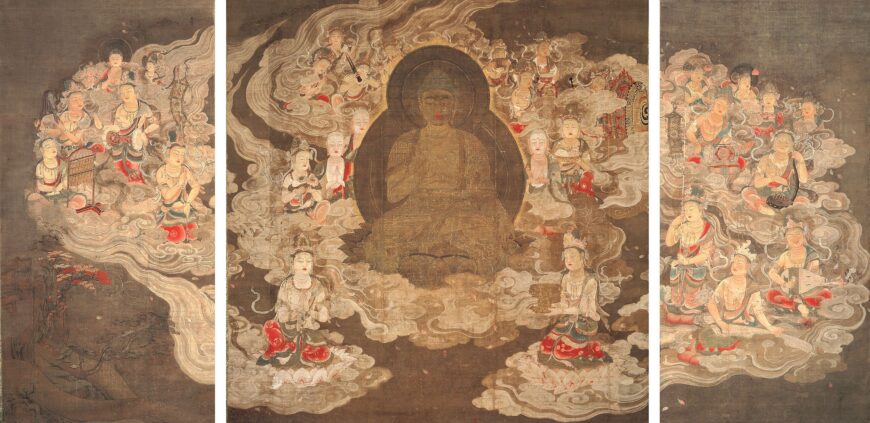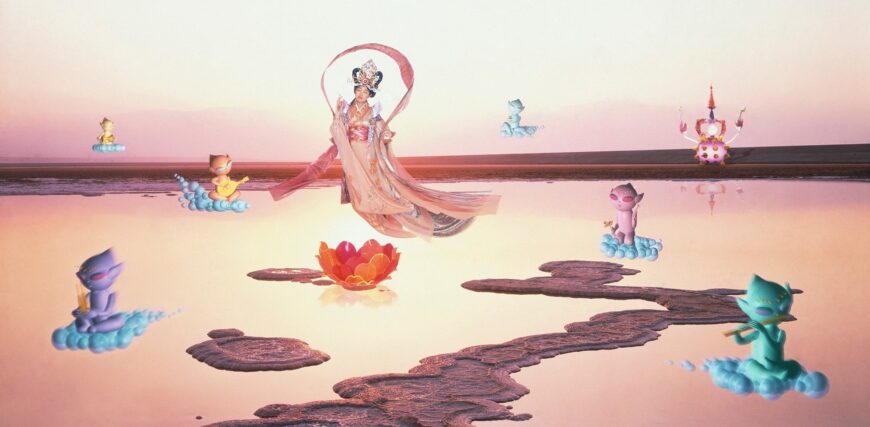
Mariko Mori, Pure Land, 1996–98, glass with photo interlayer, 305 x 610 x 2.2 cm (Los Angeles County Museum of Art) © Mariko Mori
Floating on a lotus blossom
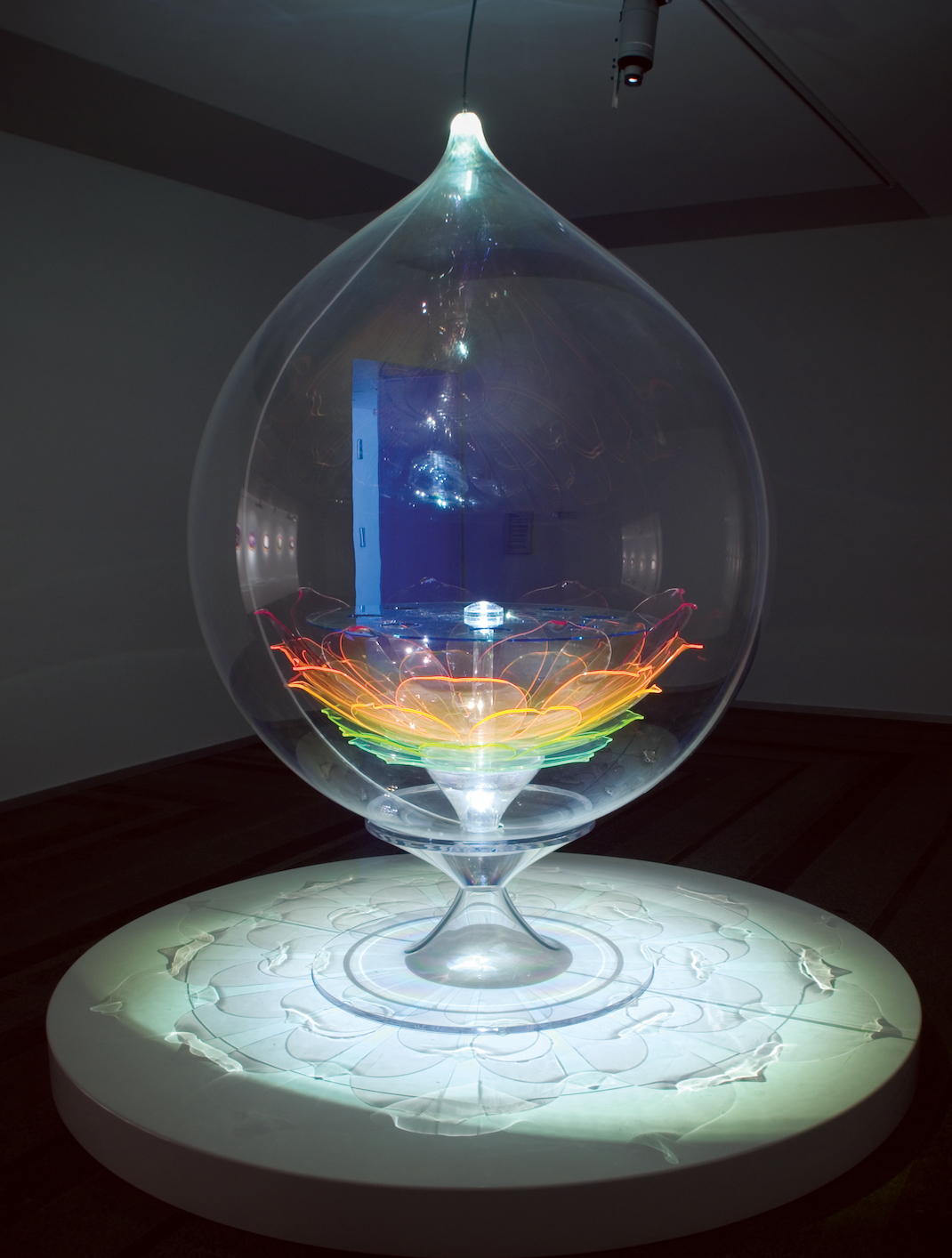
Installation view at PinchukArtCentre, Kyiv, Mariko Mori, Enlightenment Capsule, 1996–98, plastic, solar transmitting device, fiber optic cables, 108 x 83 x 83 inches (photo: Sergei Illin, PinchukArtCentre © 2008) © Mariko Mori
Every element we see here has significance that may not be apparent at first glance—the serene landscape, with its golden sky, smooth pink land masses, and perfectly still water, is rich with symbolism. Pure Land is set during sunrise in the landscape of the Dead Sea, the lowest point on earth, called “dead” because the high salinity of its water does not support fish or plant life. In Shinto tradition, salt is used as an agent of purification. Floating in the water is a lotus blossom—symbol of purity and rebirth into paradise. This blossom resembles one in Mori’s 1998 sculptural installation, Enlightenment Capsule, which featured a rainbow-colored acrylic lotus blossom set within a space-age capsule illuminated by sunlight. In both Enlightenment Capsule and Pure Land, Mori blends traditional symbolism with futuristic elements. On the right hand side of the background of Pure Land is a fantastical object which resembles a playful futuristic spacecraft with arms. This may be a variation of a Tibetan stupa—a sacred Buddhist monument originally used as a burial mound. Through her imaginative reinterpretation of symbols steeped in tradition, the artist creates a timeless setting appropriate for meditation on death, purification, and rebirth.
Immersion
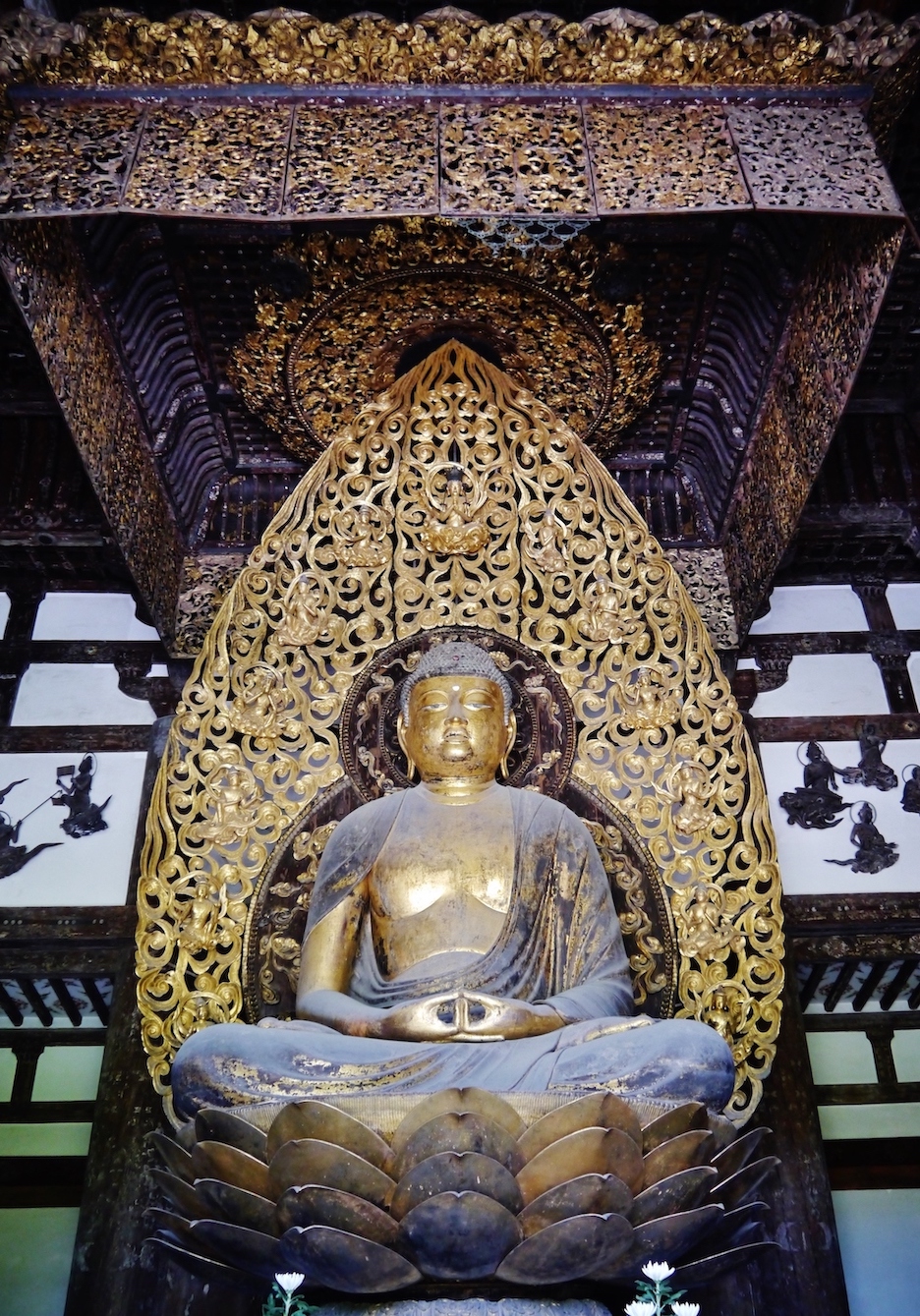
Jōchō, Amida Buddha, c. 1053 (Heian period), wood covered with wood leaf, 295 cm high (Phoenix Hall, Byōdō-in, Kyoto; photo: Zairon, CC BY-SA 4.0)
The distant horizon line, combined with the larger island in the foreground that seems to continue into the viewer’s space, create a sense of immersion, as if one were present with these fantastical figures. Perhaps this feeling of personal involvement ties in with the title itself, Pure Land, which is the paradise of Amida (or Amitabha) Buddha who descends to greet devotees at the moment of their death and takes them back to his “Pure Land of Perfect Bliss.”
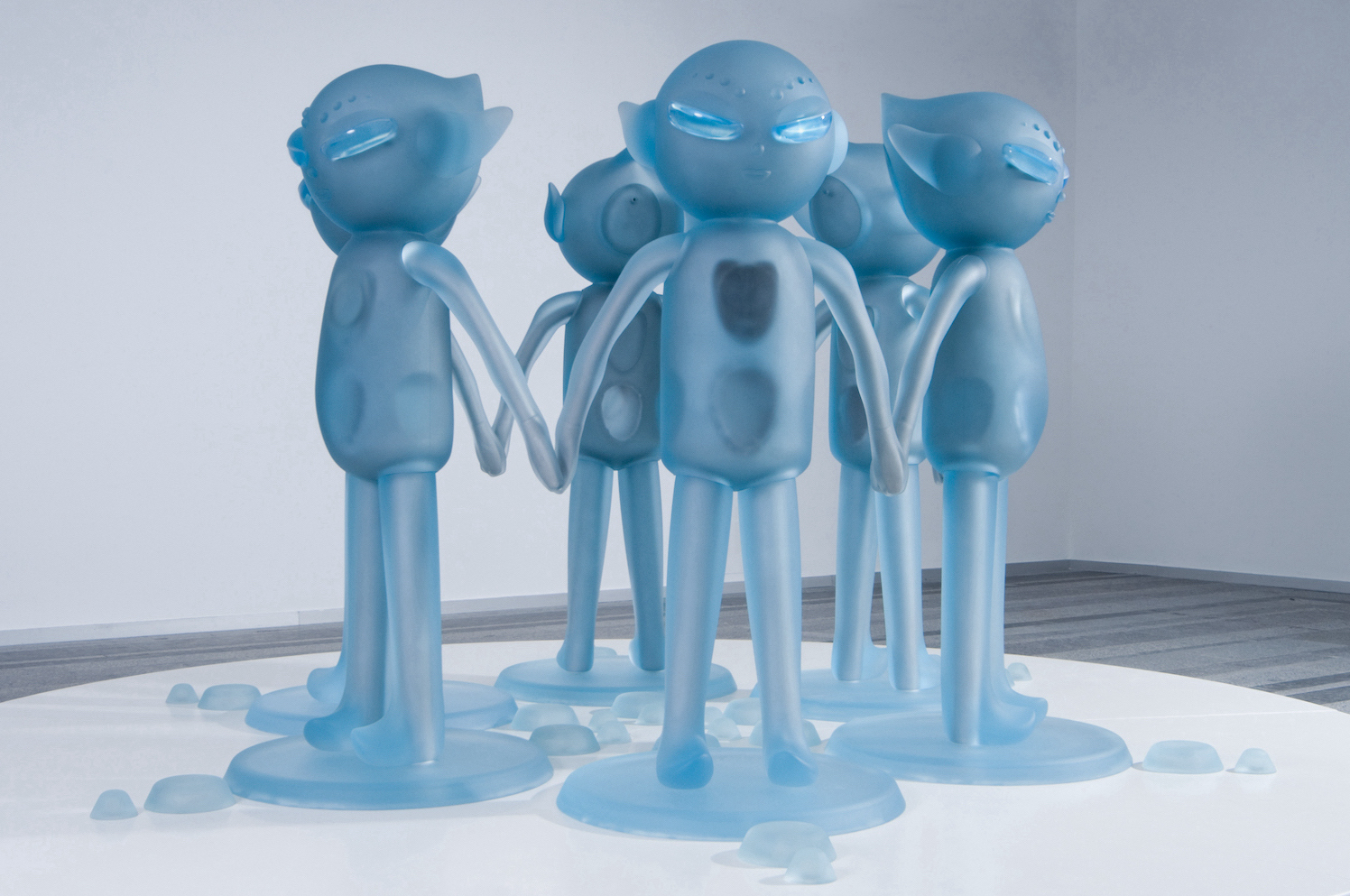
Installation view at PinchukArtCentre, Kyiv, Mariko Mori, Oneness, 2002–03 (photo: Sergei Illin, PinchukArtCentre © 2008) © Mariko Mori
Artist as object
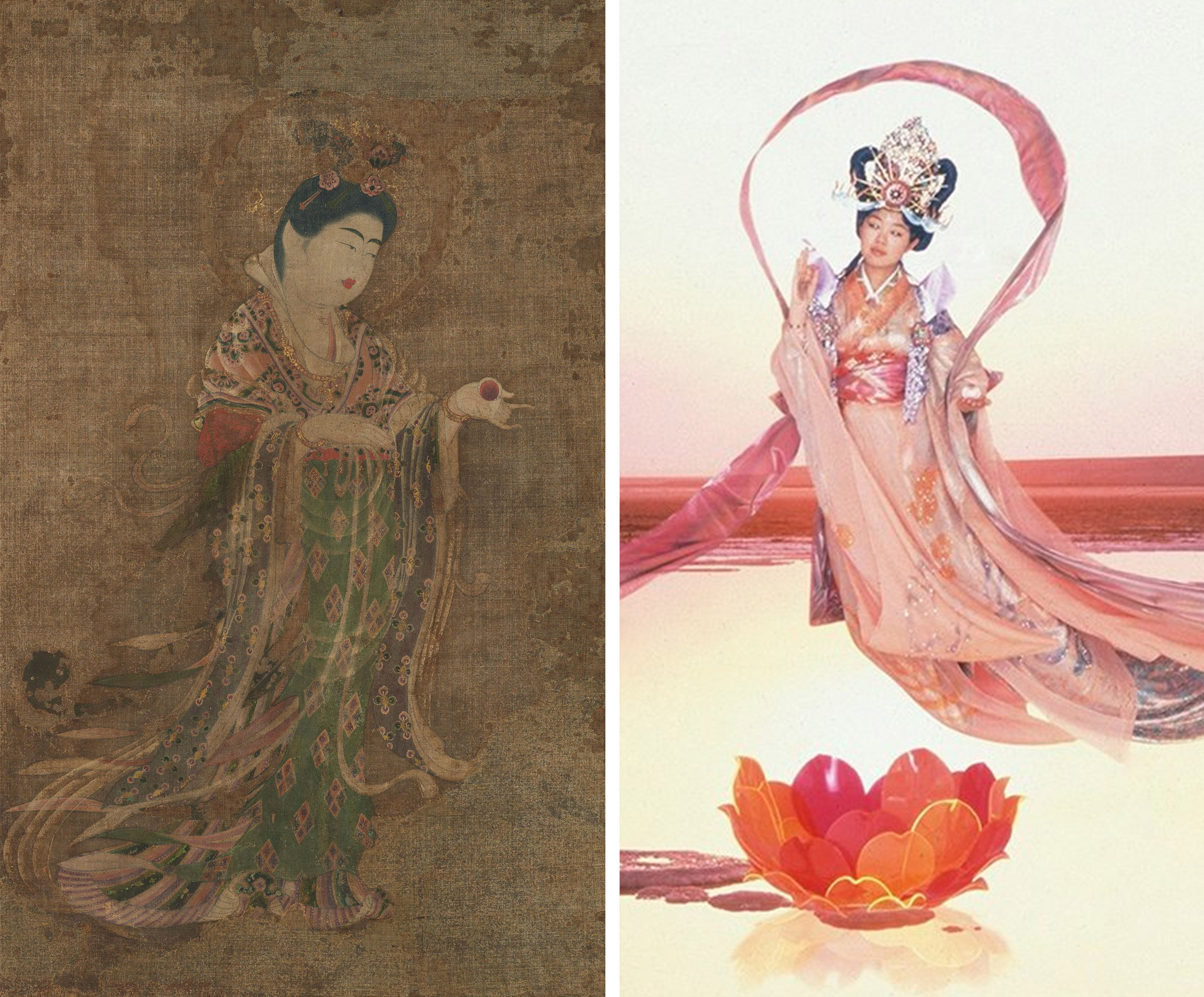
Left: Kichijoten, 8th century, color on hemp, 53 x 31.7 cm (Yukushi-ji Temple, Nara); right: Mariko Mori, Pure Land, 1996–98, glass with photo interlayer, 305 x 610 x 2.2 cm (Los Angeles County Museum of Art) © Mariko Mori
In the Pure Land photograph, Mori’s light blue, pupil-less eyes gaze serenely somewhere beyond our vision. Like the Amida Buddha, she rests above a lotus blossom and holds her right hand in a mudra of blessing and teaching; the circle formed by the index finger and thumb is the sign of the Wheel of Law. In her left hand she holds a hojyu, or magical wishing jewel, in the shape of a lotus bud. This figure is inspired by Kichijoten, originally the Indian goddess, Shri Lakshmi, who was eventually incorporated into Buddhism, and typically represents fertility, fortune, and beauty. Here Mori bars comparison with a well-known eighth-century painting of Kichijoten from Yukushi-ji Temple in Nara. Similarities include the serene elegance, softly fluttering gown, and wish-granting jewel. The eighth-century painting depicts the clothing and appearance of an elegant lady of the Chinese Tang Dynasty, and it may have been an object of veneration during the annual New Year event when devotees prayed for happiness and fertility. In this manner, a beautiful, elegant woman was seen to embody the ideas of good fortune and prosperity and became an object of worship.
By taking on this ancient persona, Mori dissolves her own identity and is transformed into the elegant Tang lady and goddess of fortune, while simultaneously performing the welcoming role of Amida Buddha. Mori’s enlightened self-representation descends to guide the viewer into a “Pure Land of Perfect Bliss” of her own creation. Perhaps more significantly, the artist seeks to lead the viewer into her immersive paradise. In both formats, the multi-sensory video Nirvana and purely visual Pure Land photograph, the message is clear: enlightenment is for all.

